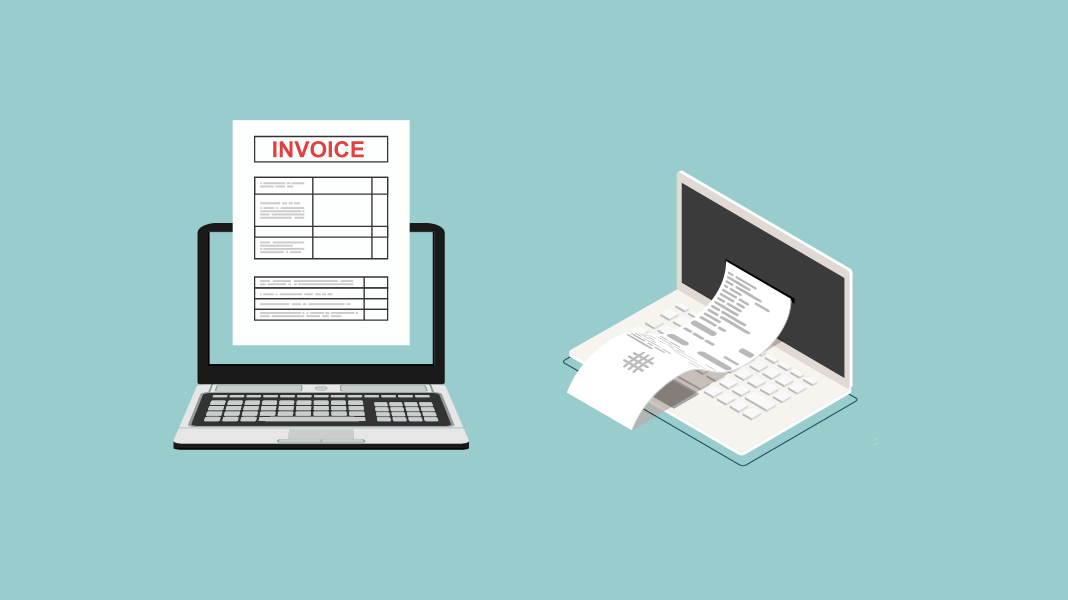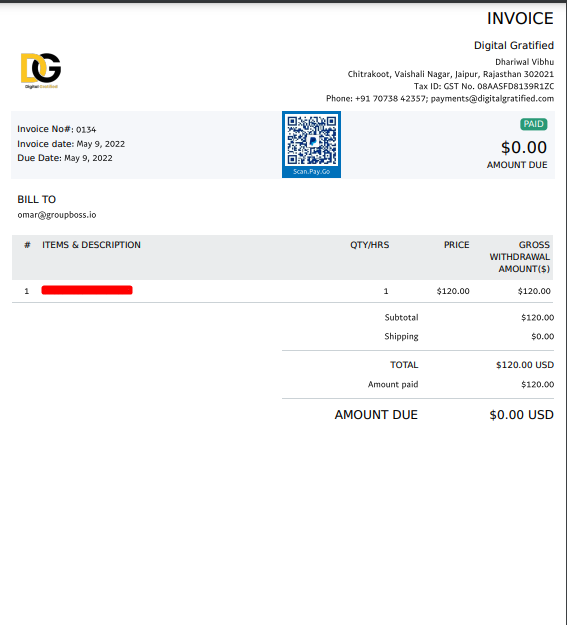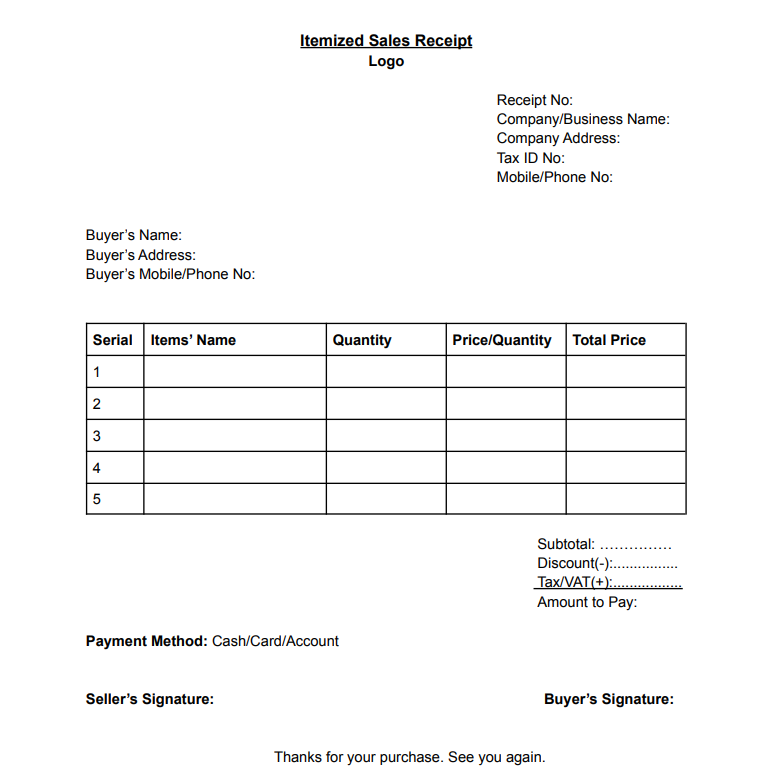Invoice vs Receipt: Key Differences and a Definitive Guide
Invoice and Receipt are different though it seems similar. Learn the key differences between invoices and receipts. Use Reciptmakerly to generate beautiful invoices and receipts with customizable templates.
4.9 | Made with ♥

The main difference between invoices and receipts is the time of payment. An invoice is issued before payment, asking the payee to pay the bill, whereas a receipt is issued after the payment is made.
This article will help you learn the critical differences between invoices and receipts.
What is an invoice?
A seller sends a customer an invoice to request payment for goods or services. Similar to a bill, it details products or services, their cost, and accepted payment methods. Customers receive invoices after receiving products or services but before payment. Manufacturers, wholesalers, and freelancers who provide services rather than things, such as content writers, or graphic designers( for example, quotes designers), use them often. Any business that has to bill clients after a sale can utilize invoices.
Key characteristics of an invoice
- An invoice is issued and sent to the payee before payment
- Contains invoice number
- An invoice should have the details of the seller and purchaser, including name, address, company logo and contact number.
- A breakdown of the payment should be added to the invoice.
- The payment method should be mentioned in the invoice.
- Invoice creation date.
- An invoice contains the due date of payment.
- Some terms and conditions should be there in the invoice.
- Service providers and business-to-business (B2B) transactions are more likely to use invoices.
Types of invoice?
Several types of invoices are used in the business world. Some commonly used invoices are listed below:
- Sales invoice
- Proforma invoice
- Retainer invoice
- Recurring invoice
- Digital invoices
- Pending invoice
- Interim invoice
- Debit invoice
- Credit invoice
- Tax invoice
- Marketing invoices
Sample Invoice
A sample invoice is added here to show an idea of what an invoice looks like. The invoice format may vary based on the type of business.

How to make an invoice?
If you are using any payment processor like Paddle, or Stripe, you can make an invoice from them. You can also directly send the invoice to your customer/client and get the payment directly to your payment processors.
However, invoicing process can be done manually using MS Word, Google Docs, and design tools. You can also use invoice generator tools to create and send invoices to your customers/clients.
When to use an invoice?
Businesses use invoices across all sizes, sectors, and industries. For instance, restaurants use invoices when you ask for the bill and a breakdown of what was spent. Before asking for payment, e-commerce vendors use invoices to verify the items and quantity sold, and freelancers use invoices to seek payment after a project is finished.
It's best practice to send clients a digital or paper invoice at the time of order if you operate an online business or take phone orders. Invoices are typically delivered to clients when a company offers goods or services ahead of the payment deadline.
However, adding a customary message at the end of the invoice can increase your customers' loyalty.
What is a receipt?
A receipt is a document issued by a business to a consumer following payment for goods or services. It serves as payment verification for both your company and the customer. Include your company's information, the original invoice number, the payment date, the amount paid, and any outstanding balance on payment receipts. An itemized receipt lists the items purchased along with their prices.
Whenever a customer makes a payment, a receipt should be issued. Included are deposits and partial payments. Customers require receipts if they wish to return or exchange a product, and you need to validate their claims. that's why they should keep the receipts for future use.
Key characteristics of a receipt
- A receipt is issued and sent to the payee after payment.
- Contains receipt number.
- A receipt should have the details of the seller and purchaser, including name, address, and contact number.
- A breakdown of the payment should be added in the receipt.
- The payment method should be mentioned in the receipt.
- Receipt creation date.
- The due date is not necessary in the receipt as the bill is paid already.
- Some terms and conditions should be there in the receipt.
Why are receipts important for businesses?
Receipts help businesses retain accurate records. Business receipts help firms track spending and act as important tax evidence. Organizations plan for the future by allowing them to evaluate historical data and develop budgets based on prior costs based on the receipts.
Accurate recordkeeping helps organizations track financial performance, compile financial statements, and submit tax filings.
Sample receipt
A sample receipt is added below to give some idea to the readers. Some essential components are important for making a receipt. Don’t forget to keep the essential elements in your receipt.

Types of receipts?
Receipts can be of various types based on their usage. But, the general format of the receipt remains the same. Below, some prominent receipt types are enlisted.
- Restaurant receipts
- Store receipts
- Parking receipts
- Taxi receipts
- Hotel receipts
- Car rental receipts
- Phone and internet bill receipts
- Rent receipt
- Groceries receipts
- Gas/Fuel receipt
- Tax receipts
- Cash receipts
- Construction receipts
- Jewelry receipts
- Expense receipts
When to use Receipts?
To show that specific expenses were incurred, consumers frequently need receipts. They could want the receipt when claiming a tax deduction or making an employer reimbursement request.
Consumers might need to change or return any items purchased from a store or shop. Based on the terms and conditions of the shop, they can adjust the return or change. But, they will ask for the receipts from the customer.
So, keeping receipts for both the seller and the customer is essential. As a customer, if you get too many paper receipts, you can use different apps for receipt scanning to preserve and record the receipts.
How do I make a receipt?
Making receipts of different types is now easy. Some businesses use paper receipts, whereas others use digital ones. There are many receipt maker tools available on the internet. You need to choose the best suitable one for you. If you want to generate receipts within a short time using different premade templates of renowned brands, Receiptmakerly can be a good option.
Key Takeaways
There are some similarities between invoices and receipts, but some differences will help you use them correctly for your business. Both are important for companies, and they need to be used properly. It's time to take action and implement a receipt or invoice, whichever is the best fit for your business.